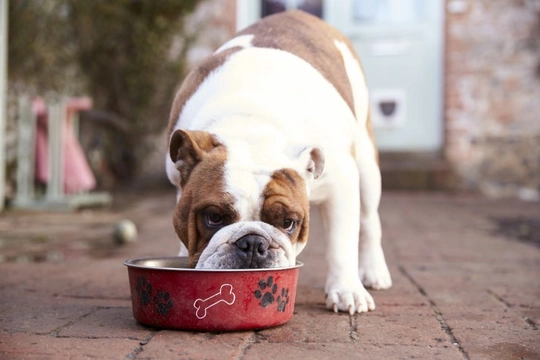
Do dogs get bored with eating the same food every day?
We humans would soon get very bored and fed up with eating exactly the same food prepared in the same way for every meal, and so it is only natural that as dog owners, we also wonder if the same thing is true for our dogs.
Wild dogs tend to eat a very varied diet of foods that they catch and kill, as well as scavenged meat and vegetables and other food groups too – but this is largely due to the opportunistic nature of dogs, and the necessity of eating a broad range of different types of foods that are available in order to ensure that they consume enough calories.
Domestic dogs too are naturally very adept scavengers, as well as being highly food-motivated – which means that a dog that finds some scraps or that has the chance to eat something that is not deliberately offered to them will usually eat first and think later. This can of course cause problems.
However, it doesn’t really answer the question as to whether or not dogs get bored eating the same things all the time, as an opportunistic dog will usually be just as happy to eat some more of their normal diet as they will be to eat something they shouldn’t have!
In this article, we will attempt to answer the question of whether or not dogs do indeed get bored of eating the same food at every meal, and so, what is the most appropriate way to feed your dog.
What dogs choose to eat is not always suitable
First of all, many dogs are serial offenders when it comes to ending up at the vets due to ingesting something toxic or disagreeable, and they aren’t that good at keeping themselves safe by choosing only healthy and appropriate foods, in contrast with cats, who are generally very selective eaters.
Ergo, just because your dog might be more than willing to try something new or enjoy a range of flavours doesn’t mean that this is necessarily a good thing, and it is unwise to take your dog’s actions and behaviours as a guide when it comes to deciding what and how to feed them.
Food transitions can lead to digestive upsets
Changing suddenly from one foodstuff to another can lead to short-term (or more acute) digestive upsets in dogs, as despite the sheer range of foods that dogs are technically able to eat, things that their stomachs are not used to can lead to problems.
Giving your dog a different food at every meal might seem like a good way to give them lots of variety, but this is also apt to lead to indigestion and bouts of digestive upsets, such as vomiting and diarrhoea – which does not necessarily indicate that the food in question is bad for your dog, but my well mean that you didn’t introduce it slowly and properly.
Do dogs need a variety of foods to stay healthy?
Dog food in any format – kibble, tins of wet food and a properly planned raw diet – are all complete diets for dogs, which mean that they contain the right balance of ingredients and all of the nutrients that your dog needs to stay healthy, without the need for any supplemental feeding.
Whilst dog kibble and wet food might look like a very dull, uniform product, it will actually contain a range of ingredients including meats, vegetables, potentially grains, vitamins and nutrients, all packaged up in an easy to feed format that accounts for all of your dog’s needs, providing variety as well as filling their stomach – albeit the taste may well be very uniform.
Dogs may find the same diet every day boring
It is entirely possible that a dog will get bored with eating the same thing at every meal, although if they are used to this, they will have no frame of reference for an alternative, and also, dogs are usually so enthusiastic about food that simply repeating a meal is not usually enough to put them off!
Allocating your dog a portion of treats and rewards to enjoy throughout the day can help to prevent boredom and please your dog, as long as they don’t get so many treats that they lose interest in their proper meals!
Safe ways to vary your dog’s diet
If you are keen to vary your dog’s diet so that they don’t get bored with it, there are a few ways that you can do this safely without upsetting the average dog’s digestive balance.
The first and most obvious way to do this is to feed your dog different flavours of the same main diet variant – such as the chicken version and also, the lamb version of the same brand. Feeding your dog a mixture of wet and dry food is another option, as is keeping two types of kibble (or wet food) and mixing them at meals, or feeding one type for one meal per day and the other for their second.
You can also change the texture of foods to increase your dog’s interest by adding a little water or weak gravy, or gently warming wet food before serving it to your dog.



